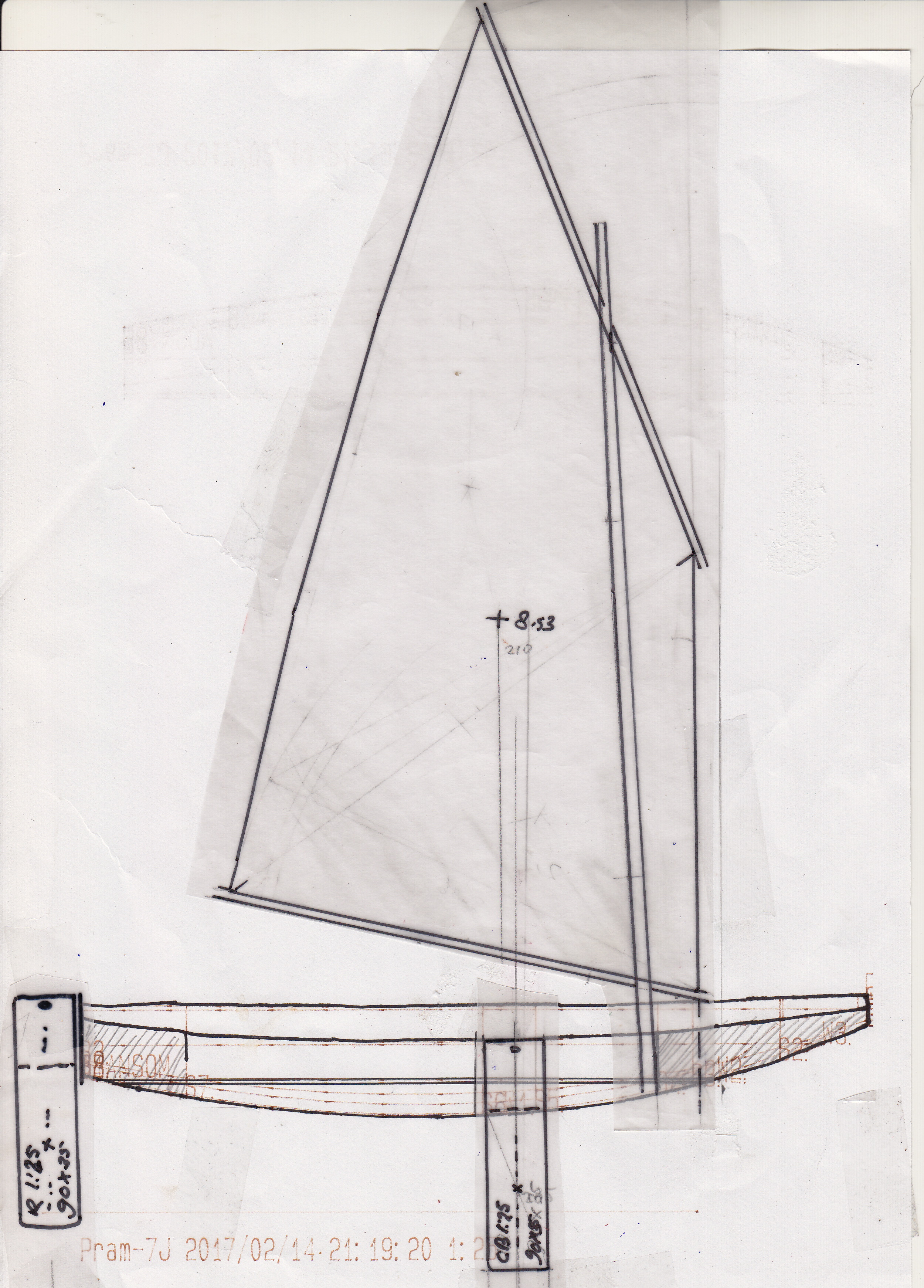
A 15ft Pram for Dinghy Cruising
20160601
20160701
20160711
20160801
20160901
20160915
20161201
20161215
20170107
20170113
20170114
20170119
20170120
20170122
20170123
20170131
20170208
20170219
20170220
20170221
20170224
20170225
20170318
20170328
20170329
20170408
20170409
20170417
20170420
20170421
20170422
20170423
20170424
20170425
20170426
20170427
20170501
20170509
20170521
20170525
<<
>>
20170318 |
Mast PositionReconsidered the mast position. The mast position determines many other decisions so we need to get this right. The center of effort of the sail is 110cm aft of the luff and 90cm aft of the forward end of the mast foot. If we put the mast bulkhead at 120cm, CE will be at 210cm. This increases the size of the bow tank and allows a mast bury of about 36cm. CLR should now be at 210cm minus a few cm to provide some weather helm. Let us say 205cm. The daggerboard will have a chord of 35cm and run from 187cm to 222cm. The daggerboard case runs between 180cm and 230cm. The extra length allows a robust construction and provides room to shift the position of the board if needed. The thwart will run from 260cm to 290cm. This leaves 130cm to the aft bulkhead at 390cm. The floorboards should be about 5cm from the bottom. The aft tank will fit a folded sea chart. Clarification 26-10-2024I realize that I have been unclear about the relative positions of CE and CLR.
 20170318_sailplan.jpg Need updated sailplan here |